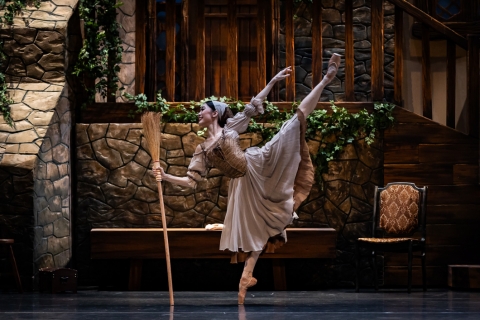What makes a good photo? Sure, following rules – and having a great camera – will ensure you get sharp, well lit images with smiling people against gorgeous backgrounds. You can always learn the technical side of things, but even on automatic and on your phone, the following tips have to do more with what happens BEFORE you actually take the shot.
What makes a good picture?
I think part of what makes a good photo is what it makes you feel: a good image triggers memories and emotions of that moment.
So, the aim should be to take less photos but more meaningful ones. Your little one might be just about to crawl, or is starting to use a spoon to eat by herself. Or you may travel to wonderful places or explore the outdoors and want to be able to look back one day and share the stories with your grown up children.
But first, a simple tip if you are using your phone: you can lock the focus on the subject by pressing the screen for a couple of seconds. Once the focus is locked, use your finger to slide up and down to increase or lower the exposure/brightness. This takes a bit of practice so try on non-moving things before you try it on your walking toddler.
1. Change your perspective and look for interesting light
It’s incredible the things we see when we change our perspective. Going down to ground level or shooting directly from above are my two favourite things. Try it. Going down to the kids’ level will show how small they are. See how big the space looks now compared to your two-year-old playing on the floor? You might also notice that it helps to remove unwanted elements in the background or surprise you with reflections.
 iPhone shot
iPhone shot
You will also start to notice little details when you get closer: their cute, chubby hands, the curve of their lashes. From a little further away, you can capture their environment: the toys that surround them for example, or the living room space that they will not remember. Try to get out of the room and frame your little one within the door frame. Shooting from directly above, we can capture some cute positions that our children take when sleeping or starting to crawl, for example.
 iPhone shot
iPhone shot
What is interesting light? It’s made of patterns and shapes, it comes through the window with the morning or afternoon sun. It shines through leaves of a tree. It hits the floor or a wall and you can see it dancing.
No sun? No problem. Indoors, get closer to windows (strategically place the painting easel right next to a big one). If outdoors, no sun means there will be very soft shadows and you’ll be free to do as you please. Best times to shoot outdoors are early morning and late afternoon, when the sun is lower in the sky.

Moving around will allow you to see light that you might have never noticed before. Interesting light will instantly bring something ‘wow’ to your shot, and guide the viewer’s eyes.
2. Anticipate the action
This comes with a good dose of patience. You know your children the best so you know what they like and how they do things. You also know what will make them giggle, frown, look curious, interested etc. By ‘knowing’, or anticipating what is going to happen next, you will be able to position yourself somewhere you will get the best angle, perspective or light.
Stay open minded to something not happening and going with whatever comes instead. Interact with your children, and perhaps put the camera/phone down for a while and come back to it a bit later.

Sometimes anticipating means you walking in front and positioning yourself, ready for the action. I often do that when we are traveling. I check the environment, the background and light and position myself, waiting for the rest of my crew to walk in the frame. Sometimes it means I have to eat my ice cream faster than them…

I feel like taking the time to observe first allows me to pick my moment to take the photo. There’s nothing wrong with taking pictures straight away, but when we do that, we don’t give ourselves the time to take things in (the scene, the colours, the light, our position and why we are taking the photo in the first place) and we can’t anticipate what our children will be doing. So we may come back with dozens of photos of the exact same scenes (still guilty of this!), trying to make our little gang smile at us, and none of these work. Instead, choose to wait and see, and feel.

3. Let them be
Kids don’t have to be smiling at the camera for the photos to be joyful, happy memories. Let’s face it, it’s hard to make a child smile at the camera, or make siblings interact together standing in front of a beautiful door in Bali at that exact time when we want the photo. Take the photo of the door, on its own, and move on.
As for your kids, take the time to observe when they are interacting together, or when they are being themselves. Even if being themselves means pulling a tired face after a long day walking around visiting new places. Go with the flow of the moment, one that will trigger memories later on. Moments are made of all kinds of emotions. Embrace that. If you still want a photo of your kids in front of that door, how about suggesting a game? Who’s the tallest, who can reach the highest with their hands up? Can you look at each other without laughing? A little interaction might just give them that little encouragement. Equally, don’t force them and let them interpret your ‘directions’ in their own way, their personality will shine through.


4. Aim for authentic rather than perfection
Which also means ‘let it go’. Messy breakfast time on a weekend is as good as an excuse for a photo as everyone bathed and in their best outfits ready to go out. Why? Because messy breakfast also means morning light and cute little splashes of milk and cereals and fruit covered faces. Something that will not last forever (thankfully?). Because it also means fuzzy hair and moments spent together without rushing. They are only little once.
Life is made of little moments that, when we look back, we will be nostalgic about. It doesn’t mean these moments were perfect, that they didn’t come with their dose of frustrations. But they are testimonies of time passing. While in it, it’s not always easy to see. But remember, triggering memories is the key. Authentic means: get the details, get the environment, get life. As it is, right now. So let go of the ‘perfect’, and make way for real life.


5. Get in the frame
If you don’t do it for you, do it for them. Your children. They think you are the most beautiful woman or the most gorgeous man on the planet until you prove them otherwise. Don’t do that. Instead, get in the picture with them. Set your phone/camera on timer and play with them, brush their hair, help them get dressed, give them a cuddle, tickle them, feed them, dance with them, bake or cook with them or build something together.
Who are these photos for? Think carefully why you are taking them in the first place. Don’t you want your kids to see you with them on photos? Find a good reason why you wouldn’t want them to see that. I know all about women not liking themselves on pictures and I also know all about men running away from them because they don’t know what to do with their hands. It’s OK, you don’t have to do anything special. Special is now. You will regret more not being on the picture than being on it.



Bonus tip: print your images
Yes, do. Even if they are phone photos. There are many online services to do that, or create your own albums. Even better let your kids help you.



















